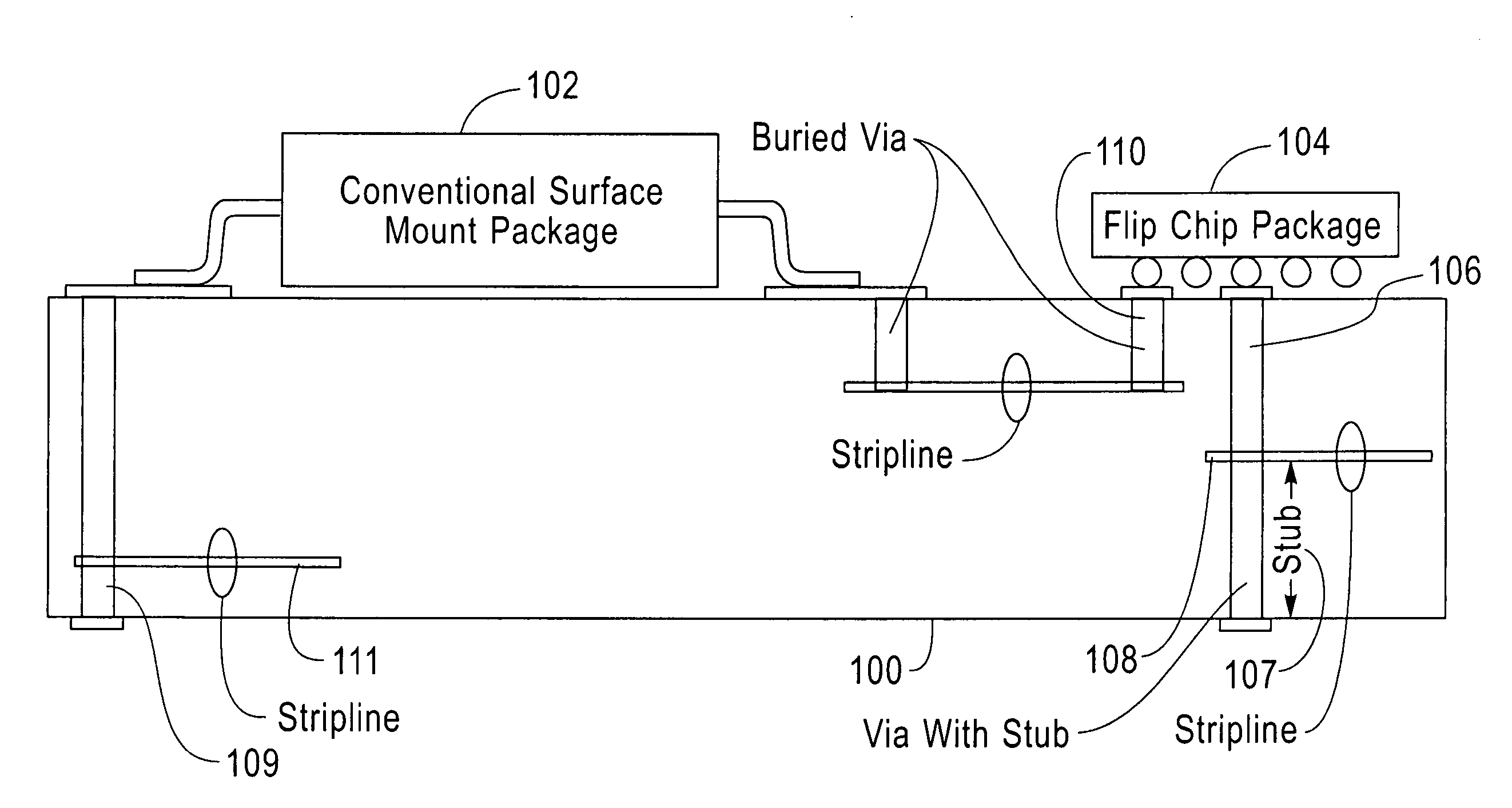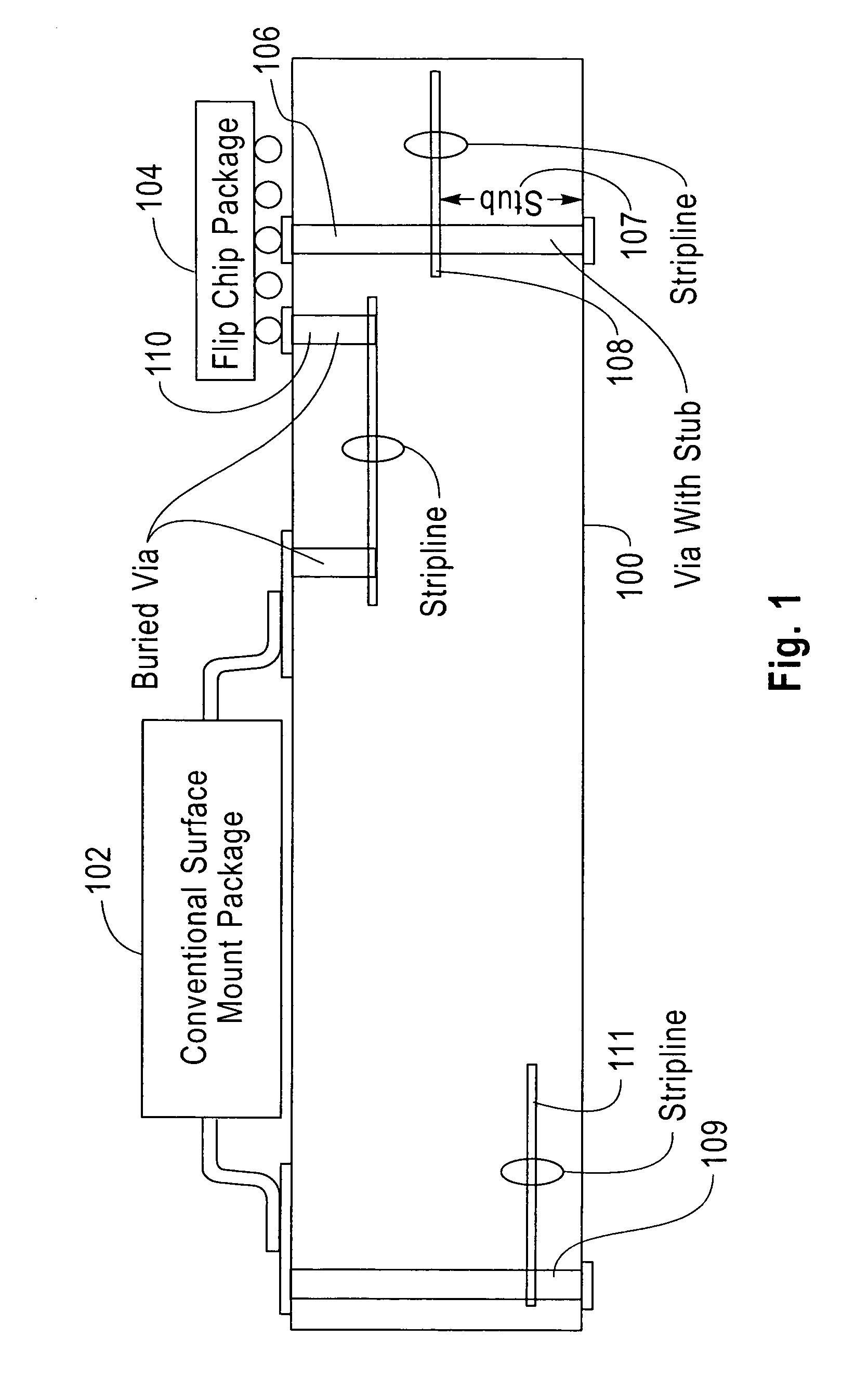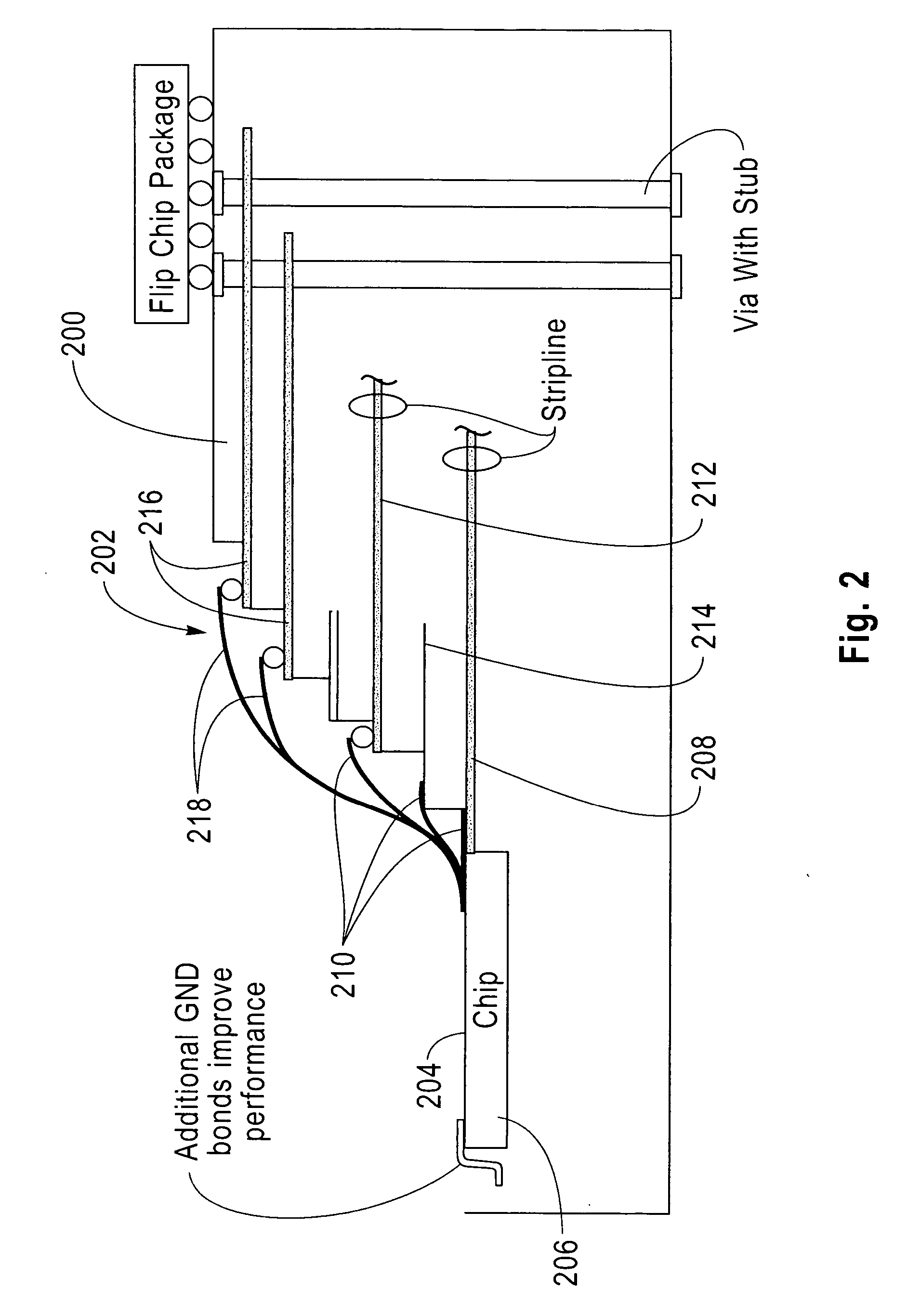Integrated circuit chip packaging
a technology of integrated circuits and chip packaging, which is applied in the direction of printed circuit components, printed circuit manufacturing, instruments, etc., can solve the problems of signal distortion, higher manufacturing cost of buried circuits via b>110/b>, and signal subject to problems, so as to achieve low cost and high performance
- Summary
- Abstract
- Description
- Claims
- Application Information
AI Technical Summary
Benefits of technology
Problems solved by technology
Method used
Image
Examples
Embodiment Construction
[0036] Referring now to the drawings, and more particularly to FIGS. 1-5, there are shown exemplary embodiments of the method and structures of the present invention.
[0037] As explained above, there are many topologies conventionally available for implementing transmission lines in circuit boards (e.g., printed circuit boards (PCBs)). Internal embedded conductors, which may include an embedded conductor sandwiched between solid planes of a reference ground plane, offer many advantages over surface conductors. Embedded conductors support less dispersive transverse electric and magnetic modes which may be advantageous for wide band operation. An embedded conductor may also be self-shielding and, since they may undergo fewer processing steps than surface wiring they may be easier and less costly to fabricate.
[0038] Connecting an integrated circuit chip to embedded conductors conventionally requires the use of vias to connect from the surface of a printed circuit board where component...
PUM
 Login to View More
Login to View More Abstract
Description
Claims
Application Information
 Login to View More
Login to View More - R&D
- Intellectual Property
- Life Sciences
- Materials
- Tech Scout
- Unparalleled Data Quality
- Higher Quality Content
- 60% Fewer Hallucinations
Browse by: Latest US Patents, China's latest patents, Technical Efficacy Thesaurus, Application Domain, Technology Topic, Popular Technical Reports.
© 2025 PatSnap. All rights reserved.Legal|Privacy policy|Modern Slavery Act Transparency Statement|Sitemap|About US| Contact US: help@patsnap.com



